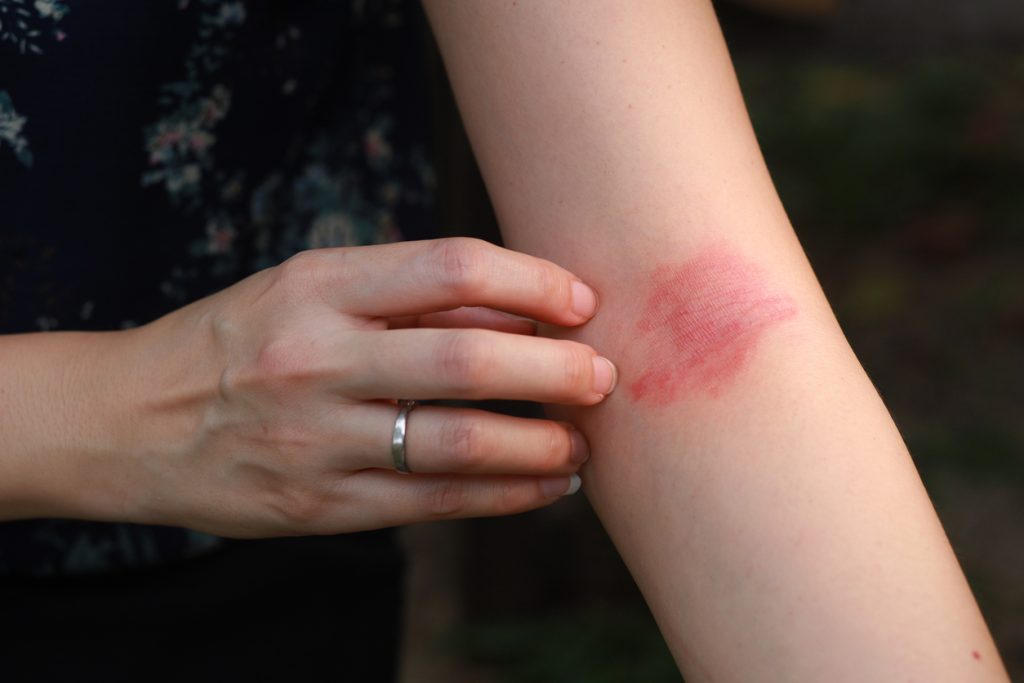Fully 80.7% of atopic dermatitis (AD) patients using Vtama (tapinarof) cream, 1% achieved Eczema Area and Severity Index (EASI ) 75 in an integrated analysis of all the ADORING Program studies, Dermavant reports.
Vtama cream is a novel, aryl hydrocarbon receptor agonist in development as a once-daily, steroid-free, topical cream for both acute treatment and long-term management of AD. Vtama cream, 1% is currently approved for the topical treatment of plaque psoriasis in adults in the U.S. and is the same strength and formulation being studied in the ADORING Phase 3 development program for AD.
“The integrated analysis data from the ADORING development program are particularly encouraging as they show a high level of efficacy in a diverse patient population, including patients down to 2 years of age, who are in need of a treatment option such as Vtama cream that has demonstrated a positive safety and tolerability profile and potential long-term disease control in the ADORING studies,” says Eric Simpson, MD, MCR, the Frances J. Storrs Medical Dermatology Professor and Director of CLEAR Eczema Center, at the Oregon Health & Science University, in a news release. “If approved for the treatment of atopic dermatitis, Vtama cream’s efficacy and safety profile combined with its rapid onset of itch reduction, the most common symptom of atopic dermatitis, could provide an important new treatment option for not only patients suffering from the disease but also for their caregivers and the healthcare professionals treating them.”
ADORING 1 and ADORING 2 were two identical, double-blind, randomized, vehicle-controlled Phase 3 studies that evaluated the efficacy and safety of Vtama cream, 1% in adults and pediatric patients down to 2 years old who had a Validated Investigator Global Assessment for Atopic Dermatitis (vIGA-AD) score of 3 (moderate) to 4 (severe) at baseline.
ADORING 3 is an ongoing open-label, long-term extension study being conducted to evaluate the safety and efficacy of Vtama cream, 1% in patients with AD for up to 48 weeks of total treatment. The ADORING 3 study, which consists of 728 patients in total, includes patients who previously completed ADORING 1, ADORING 2, or the Maximal Usage Pharmacokinetics (MUPK) study for AD. ADORING 3 also includes 76 directly enrolled pediatric patients who did not meet the criteria for enrollment in the ADORING 1 and ADORING 2 pivotal trials because their AD was either mild or too severe.
Dermavant completed an interim analysis of data from ADORING 3. The company also completed a planned integrated analysis of data including 711 patients from ADORING 1, ADORING 2, ADORING 3 and the MUPK study who had a vIGA-AD score of 3 (moderate) or greater prior to any treatment with Vtama cream.
The data from these analyses will be included in the company’s Supplemental New Drug Application (sNDA) submission to the U.S. Food and Drug Administration (FDA), expected in Q1 of 2024.
Todd Zavodnick, Chief Executive Officer of Dermavant, adds, “we are focused on compiling our sNDA data for submission that is expected in Q1 of 2024 and we look forward to making Vtama cream, 1% available as a potential treatment option for both adults and children suffering from atopic dermatitis as expeditiously as possible, subject to regulatory approval.”
Analyses of Efficacy Data
- The integrated analysis across the ADORING development program showed that efficacy continued to improve beyond the 8-week double blind treatment period in ADORING 1 and ADORING 2 across multiple endpoints including:
- vIGA-AD score of 0 (clear) or 1 (almost clear) with at least a 2-grade improvement from baseline was observed in 73% (519/711) of patients included.
- 80.7% (574/711) of patients achieved at least a 75% improvement in the EASI75.
- 77.9% (218/280) of patients ≥12 years old with a baseline Peak Pruritus Numeric Rating Scale (PP-NRS) score ≥4 achieved a ≥4-point reduction in PP-NRS. In the ADORING pivotal studies, a mean itch reduction was observed as early as 24 hours after first application.
- 92.3% (656/711) of patients achieved at least a 1-grade improvement in vIGA-AD score.
- The interim analysis of the ADORING 3 open-label, long-term extension study demonstrated that 51.2% (373/728) of patients achieved complete disease clearance (vIGA-AD score of 0).
ADORING 3 Interim Analysis Safety Data
- Vtama cream, 1% was well-tolerated across all treated areas, including sensitive skin and intertriginous locations, as assessed by both patients and investigators.
- No new safety signals were observed with long-term use. The study discontinuation rate in ADORING 3 due to adverse events (AEs) was 2.6% (19/728).
- The majority of AEs were mild to moderate in nature with the most commonly reported AEs in ADORING 3 being folliculitis, nasopharyngitis and upper respiratory tract infection.
- There were no treatment-related serious adverse events (SAEs) reported.

